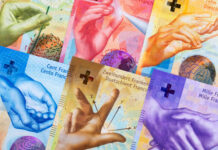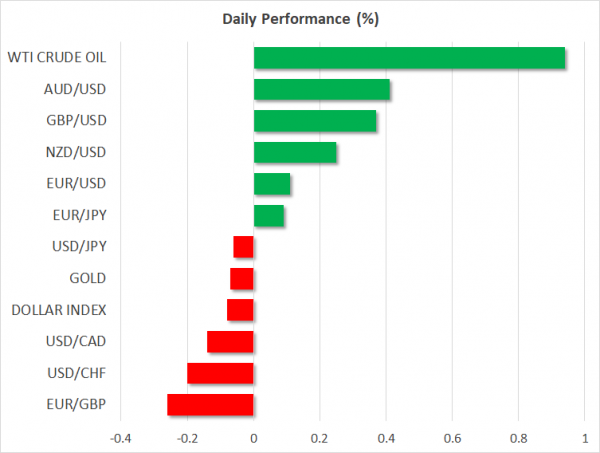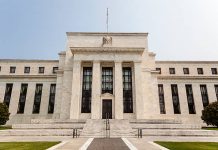- Stocks head higher as easing virus outbreak lifts mood
- But risk of over-optimism as US earnings poised to unveil virus hit
- Pound and aussie extend gains as dollar retreats
Is the global pandemic peaking?
Cautious optimism that the global pandemic of the coronavirus may have started to peak pulled global equities higher on Tuesday just as traders are about to find out what the impact of the outbreak was on corporate earnings. Stocks in Asia ended the day between 1-3% higher, led by Japan’s Nikkei (+3.1%), and European shares were mostly up too following the long Easter weekend, while US futures surged more than 1% after yesterday’s losses.
Apart from growing signs that the virus spread is past its peak in Europe’s worst hit countries such as France, Italy, Spain and Germany, the number of new infected cases also appears to be levelling off in the United States. With authorities keen to see shuttered businesses reopen as soon as possible, Spain and Italy have already begun easing some of the restrictions and many states in the US are reportedly planning to do the same in the coming weeks.
But as many health experts continue to warn against the premature relaxation of lockdown measures, hopes are rising that a vaccine for COVID-19 will soon be found. The World Health Organization yesterday said that there are currently 70 vaccines in development, of which three are already being tested in human trials.
Earnings risk for stock market recovery
Hopes of a vaccine could be just what the doctor ordered for equity markets as traders brace themselves for what is expected to be a grim earnings season. US banking giants, JP Morgan and Wells Fargo will be the first of the major companies to publish their results for the first quarter, with both expected to report a double-digit year-on-year drop in earnings per share.
Given the unprecedented nature of this crisis, analysts’ estimates could easily miss by a wide margin, raising the prospect of a very volatile few weeks for share prices. It is possible of course that the flood of government and central bank stimulus, as well as expectations that the global shutdowns will end soon could be enough to keep risk appetite afloat as big multinationals reveal the staggering cost of the virus disruptions on their earnings.
Investors will particularly be keeping a close eye on companies’ balance sheets to get a sense of how well each firm is withstanding the collapse in trade and consumption as the lockdowns drag on.
Upbeat Chinese data boosts risk currencies
The improved risk tone was evident in currency markets as well on Tuesday, with better than expected trade data out of China further bolstering the positive sentiment. Chinese exports fell by a much less-than-expected 6.6% y/y in March. Those numbers are unlikely to hold in the coming months as the rest of the world was hit by the crisis after the virus had peaked in China. But they were enough to lift the Australian dollar to be the day’s best performer.
The aussie dollar was last up 0.5%, while its kiwi cousin stood 0.4% higher. Sterling was not far behind, gaining for a second straight day on relief that British prime minister, Boris Johnson, has been given the all clear from the coronavirus. The pound advanced above the $1.25 level to hit a one-month high against the US dollar.
In contrast, the euro was subdued, rising only marginally, as the lack of an ambitious crisis-response plan by the EU weighed on the single currency.
Safe havens such as the yen, Swiss franc and the greenback retreated, with the dollar index hovering near two-week lows. Gold was the exception, hitting a fresh 7-year high of just under $1,727, as the precious metal remained supported by a softer dollar and an abundance of cheap credit. However, this could also be a reflection that there’s still plenty of nervousness in the markets about the uncertainty that lies ahead.














